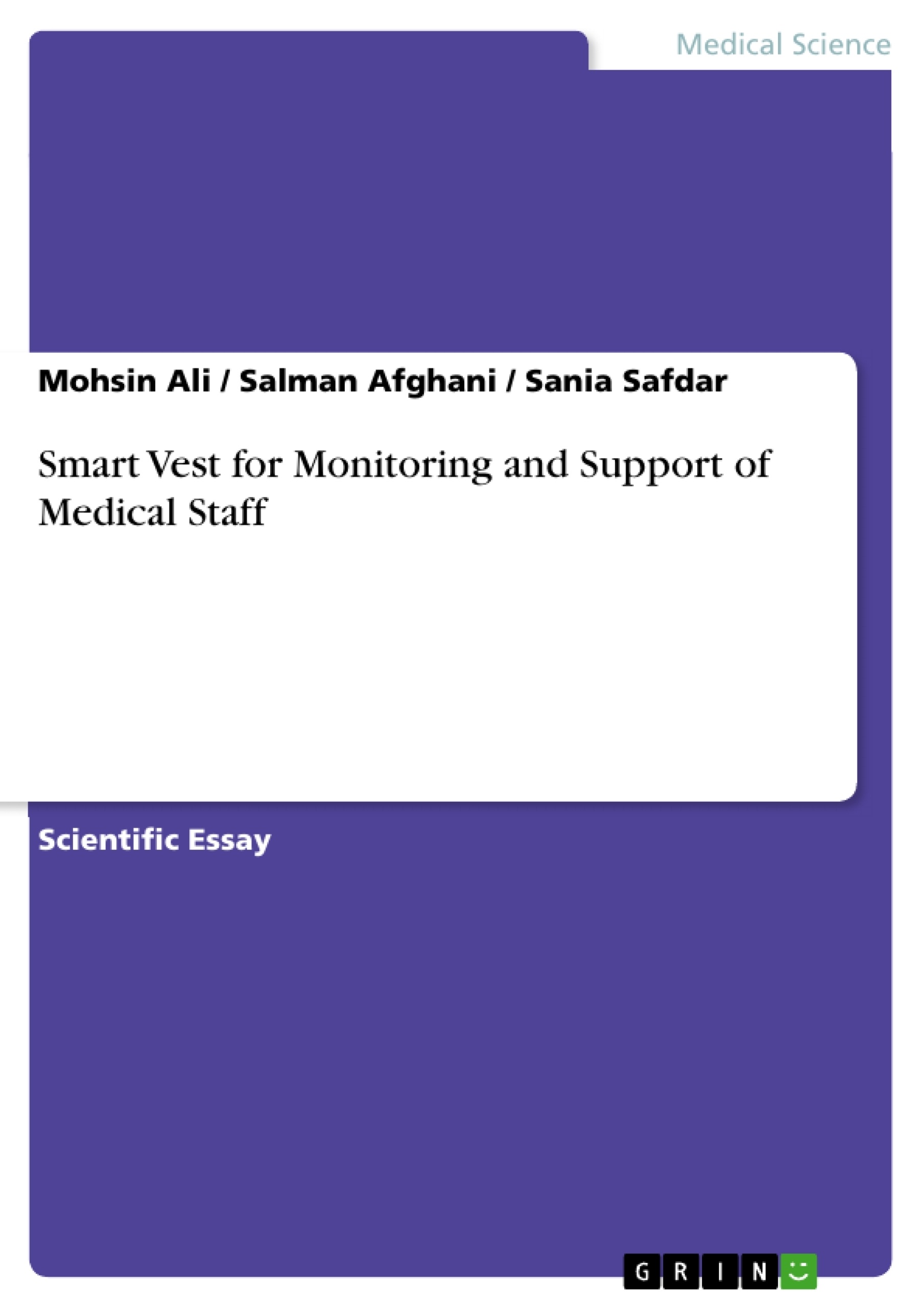This project is about the design and implementation of highly cost effective smart vest for electronic prescribing and administration system to control medical errors, prescribing errors, administration errors and for medical staff assistance. The idea is based on wearable robotics and computing technologies which is an emerging technology now a days. The vest is designed to convert medical process in the field of automation where tasks are highly precise and perfect to prevent the medical errors in hospitals and convert the whole data based into a cloud which can be accessed by medical staff and doctors at any time and will be updated automatically after each medical or diagnosis process.
This project “Smart Vest for Support and Monitoring Medical Staff” is a kind of electronic jacket, which can be used for reducing medication errors. By the help of smart vest we have automated the hospital wards, reduced the burden on the nurses and doctors and ensured the safe and proper medication of the patients. The orthodox method used in hospitals is that patient’s record and history is maintained on paper, nurses and doctors can easily commit errors because of this kind of database. However the developed countries have come up with the idea of medication cart which after further improvements can become robot to reduce medication error which could operate automatically without the help of any human being. However this smart vest after further enhancements can become more efficient and even then it would require nurse etc which means empowering the staff only, this would not reduce the humans, and man power would be used efficiently. This system thus suits the social requirements of our country. The detailed description of the hardware and software is also included in the report.
Table of Contents
- I. INTRODUCTION
- II. DEVELOPMENT OF THE DESIGN
- 1) Vest material:
- 2) Pockets designing:
- 3) Electronic Embedding:
- III. HARDWARE DESIGN
- 1) Selection of Electronic Components:
- 2) Efficient Hardware Designing:
- 3) Medical Sensors:
- 4) Initial System Designing:
- 5) Modification in System Designing:
- 6) Final System Designing:
- IV. SYSTEM WORKING
- 1) Overall System Flow and Working:
Objectives and Key Themes
The main objective of this project is to develop a cost-effective smart vest for electronic prescription and administration systems. The project aims to reduce medical errors, enhance medication safety, and assist medical staff. It leverages wearable robotics and computing technologies to automate medical processes, create a centralized data base, and improve the efficiency of hospital wards.
- Reducing medical errors in hospitals
- Automating medication processes
- Creating a centralized data base for patient information
- Improving efficiency in hospital wards
- Utilizing wearable robotics and computing technologies for healthcare
Chapter Summaries
The introduction highlights the significance of reducing medical errors in hospitals and discusses the alarming statistics associated with these errors. It mentions existing solutions, such as the closed trolley system, and their limitations, motivating the development of the smart vest as a more efficient and cost-effective alternative. The second chapter focuses on the design of the smart vest, covering key aspects such as the vest material, pocket design, and electronic embedding. The third chapter delves into the hardware design, including the selection of electronic components, the development of the circuit boards, and the integration of medical sensors. The final chapter outlines the overall system flow and working, providing a detailed explanation of the various processes involved in patient identification, medical history retrieval, diagnosis, medication delivery, and data storage. The chapter also discusses the use of IR sensors for patient identification and the use of a shift register to monitor the pockets during medication processes.
Keywords
The main keywords of this paper include medical errors, electronic prescribing, wearable robotics, cloud data base, medication administration, medical staff assistance, and hospital automation. The paper focuses on utilizing these technologies and concepts to improve patient safety and efficiency in healthcare settings.
- Quote paper
- Mohsin Ali (Author), Dr. Salman Afghani (Author), Sania Safdar (Author), 2012, Smart Vest for Monitoring and Support of Medical Staff, Munich, GRIN Verlag, https://www.grin.com/document/190006



